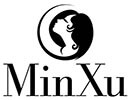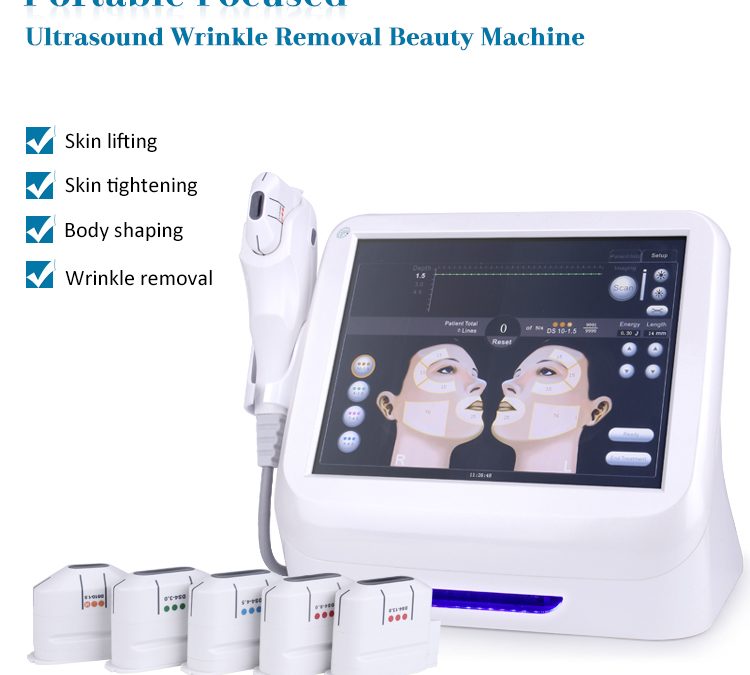Hifu High Intensity Focused Ultrasound Equipment LB163C
High intensity focused ultrasound Beauty Device LB163B
3D hifu focused ultrasound anti-wrinkle machine
Hifu 3D Ultrasound Lifting Facial Machine GN042
7D Hifu High Focused Intensity Ultrasound Beauty Equipment LB460
Multifunctional High Intensity Focused Ultrasound Therapy Machine LB236
High Focused Ultrasound Hifu Face Lift Machine LB143B
Hifu Therapy Vigina Tightening Machine GN017
Hifu Vaginal Tightening Machine GN018
V Max Hifu Ultrasound Beauty Machine LB242
Do your brows and jawline, in particular, show any indications of sagging skin on your face?
If so, it might be time to look into Ultherapy treatment. Ultherapy is a type of non-surgical facelift. It’s a non-invasive procedure that uses ultrasound waves to lift and tighten the skin on your face.
Ultherapy was approved by the FDA in 2009 for use on the forehead, under-eye area, cheeks, neck, and chest.
Since its approval, it’s been used successfully on countless patients. It has become one of the fastest-growing non-invasive cosmetic procedures in the world—and for good reason: Ultherapy offers visible results without surgery or downtime.
Ultherapy treatment takes just minutes, and you should see results in as little as three months.
In this article, we will discuss what Ultherapy is, how it works, Ultherapy cost, and any potential side effects.
What is Ultherapy?
Ultherapy is an alternative to traditional facelifts that uses ultrasound energy to lift and tighten the skin on your face. Ultherapy can be used on your entire face or just certain areas, such as your jawline or neck, and chest.
Ultherapy can be used for both men and women who are bothered by signs of aging such as sagging skin on their necks or cheeks, lines around their mouths, or loose skin under their eyes.
Ultherapy is approved by the FDA and it may be used in combination with other procedures.
The Ultherapy treatment is performed by a doctor in their office, takes about an hour, and requires no anesthesia or incisions.
Does Ultherapy work
The answer is yes — Ultherapy does work. Ultherapy treatment can produce noticeable results in terms of improved skin texture and tone, as well as lifting laxity. However, keep in mind that results will vary by individual. Some people see results after just one treatment while others require multiple sessions before seeing any improvement at all.
How does Ultherapy work?
Ultherapy works by using ultrasound energy, which creates heat within the skin and stimulates collagen production. The heat causes tiny injuries that trigger the body’s natural healing response, which includes the growth of new collagen fibers. These new fibers work to smooth out wrinkles and tighten sagging skin.
Ultherapy is a non-surgical facelift treatment designed to address the signs of aging. It can also be used to enhance the appearance of your neck and chest.
This FDA-cleared treatment is performed in a doctor’s office, takes less than an hour, and requires no recovery time.
Preparing for Ultherapy
Before getting Ultherapy, there are several things you need to do to prepare yourself:
1.Stop taking aspirin or other blood thinners at least two weeks before your procedure.
2.Stop using retinoids (vitamin A derivatives) at least two weeks before your procedure. If you have been using them for more than two weeks, your dermatologist may recommend stopping them at least four weeks prior so you can achieve the best possible results from your Ultherapy treatment.
3.Avoid alcohol for 24 hours before and after your appointment, as well as 48 hours prior if you are taking medications that may affect circulation or bruising such as Advil or Aleve.
4.Do not use makeup on the day of your appointment – it will interfere with the dermatologist’s ability to see your face clearly and may result in an inaccurate treatment plan.
5.Avoid smoking at least two weeks before Ultherapy.
6.You may also be asked to avoid consuming anti-inflammatory medications such as ibuprofen two weeks before Ultherapy.
7.Stay hydrated with plenty of water before and after your appointment.
8.It’s important that you avoid sun exposure (including tanning beds) before your treatment.
Ultherapy procedure
During therapy, you will lie comfortably on an exam table and your Ultherapy provider will remove any oil or residue from the regions they intend to treat before applying an ultrasonic gel. The Ultherapy device is pressed up against the skin, and your doctor will set it up properly using an ultrasound viewer. The targeted locations are then exposed to ultrasound energy.
The ultrasound energy causes the skin to vibrate, which helps stimulate collagen production deep in the dermis. This stimulates your body’s natural healing process and allows for a tighter and more lifted appearance of the skin.
During treatment, you can experience brief, sporadic sensations of tingling and heat. To alleviate any discomfort, painkillers can be given. The applicator is taken out after the treatment is finished.
Depending on the area being treated, a single session can take up to 90 minutes. Ultherapy for the chest lasts for roughly 30 minutes, as opposed to 60 to 90 minutes for Ultherapy for the face and neck.
The procedure is usually performed in a doctor’s office. There is no downtime after an Ultherapy session; however, some patients may experience mild swelling and redness in their treatment areas for up to 24 hours after the procedure.
Results from Ultherapy are gradual over time — it can take up to three months before you see results. However, most patients see an improvement in their appearance after an Ultherapy session.
The result of an Ultherapy treatment is tighter skin that looks smoother and more youthful than ever before.
Target areas for Ultherapy
The following target areas for Ultherapy:
The face. The face is an ideal place for Ultherapy because it is typically thinner than other parts of the body like the abdomen or thighs. This allows for better absorption of ultrasound energy into the deeper layers of skin tissue which leads to better results than when treating thicker areas like these other areas mentioned above.
Ultherapy is safe and effective for use on all areas of the face including around the eyes, lips, cheeks, and forehead.
The neck and décolleté area. The neck is the most common area to treat with Ultherapy. Many patients who have an obvious double chin go to tighten their neck and décolleté area.
The jawline. This area has become increasingly popular in recent years because it’s one of the easiest places to see results after just one treatment. While there is no downtime associated with Ultherapy in this area, you may feel a little soreness afterward, especially if you have a lot of fat in that area.
The chest area. It is a popular target for Ultherapy, as it is a common area of concern for men and women. The skin on the chest is thinner than on the face, so the effect of Ultherapy lasts longer and is more noticeable.
Eyebrows. The eyebrows are the frame of the eyes and can make or break your face. They can change your appearance dramatically if they are thinned or over-plucked. Ultherapy can help restore them to their natural shape by lifting them up where they have been pulled down by gravity or over-plucking.
Lips. Ultherapy can be used to improve the appearance of thin lips by tightening tissue beneath the surface of the skin. It can also be used to reduce excess fat in the upper lip area.
You should talk about your unique treatment options with an Ultherapy provider during your appointment.
Risks or side effects of Ultherapy treatment
There is minimal risk associated with Ultherapy treatment. Patients may experience mild discomfort or bruising in the area being treated, but this typically resolves within a few days. In some cases, patients may experience temporary numbness to the treated area.
The Ultherapy procedure is designed to be a safe and effective treatment. However, as with any cosmetic procedure, some risks or side effects may occur.
In rare cases, patients may have an allergic reaction to the Ultherapy treatment. If you experience any of these symptoms, you should contact your dermatologist.
How much does Ultherapy cost?
How much you will pay for your Ultherapy treatment will depend on a lot of things, such as:
Your Ultherapy provider’s region.
The extent of skin sagging that requires treatment.
How many sessions are necessary before the results become visible?
The qualifications of the Ultherapy practitioner you choose.
How well Ultherapy treatments work on your skin.
The places you want to treat.
Ultherapy cost for a full face and neck is about $4, 000.
What to expect after Ultherapy
Ultherapy typically doesn’t involve any downtime. After treatment, it’s possible to resume routine work like a job, socializing, or exercise.
Depending on your body’s capacity to build new collagen, you may begin to see the initial Ultherapy benefits in a few days. Up to three months are usually needed for improvement to persist.
The effects will endure until the normal aging process resumes and your body stops producing new collagen, whichever comes first. You can determine whether more Ultherapy sessions are required based on how your skin reacts to the treatment.
Conclusion
Ultherapy is a non-invasive procedure that uses ultrasound energy to tighten skin and stimulate collagen production. It has been used for years by dermatologists as an alternative to surgery, but recently it has become available in the office setting.
Ultherapy can be used to treat wrinkles around the eyes, forehead, under-eye area, cheeks, neck, and chest.
Ultherapy has been FDA approved since 2009 as a treatment for mild to moderate facial wrinkles and folds.
The procedure takes about 30 minutes, with no general anesthesia required. Patients can resume normal activities immediately after treatment and even return to work the following day if necessary. In most cases, Ultherapy can be done in one session but some patients may require two or more sessions. The average cost of Ultherapy is $4,000.
You’ll need a consultation with a board-certified dermatologist before any Ultherapy treatment begins. The dermatologist will evaluate your medical history and determine if Ultherapy treatment is right for you.

